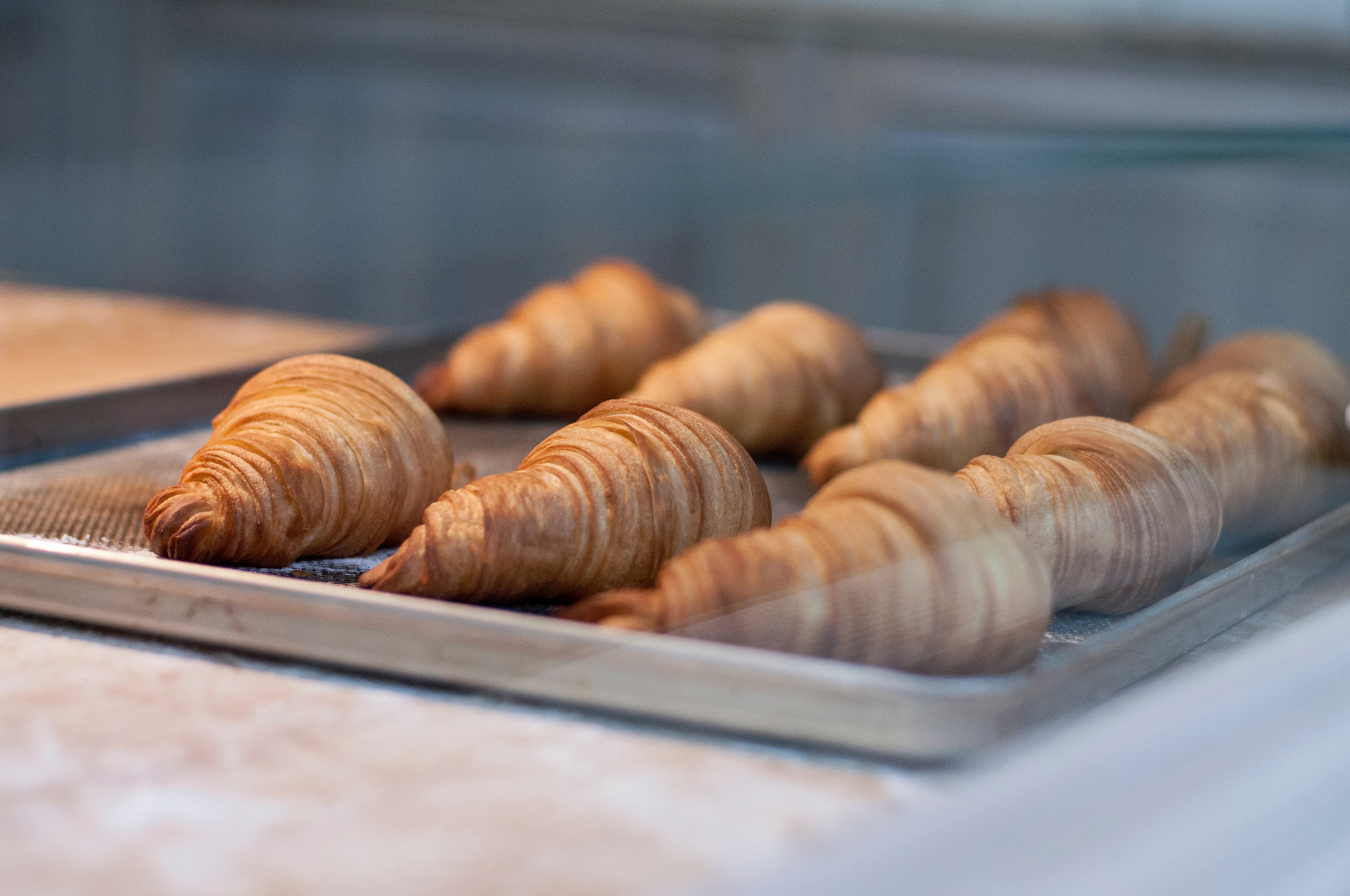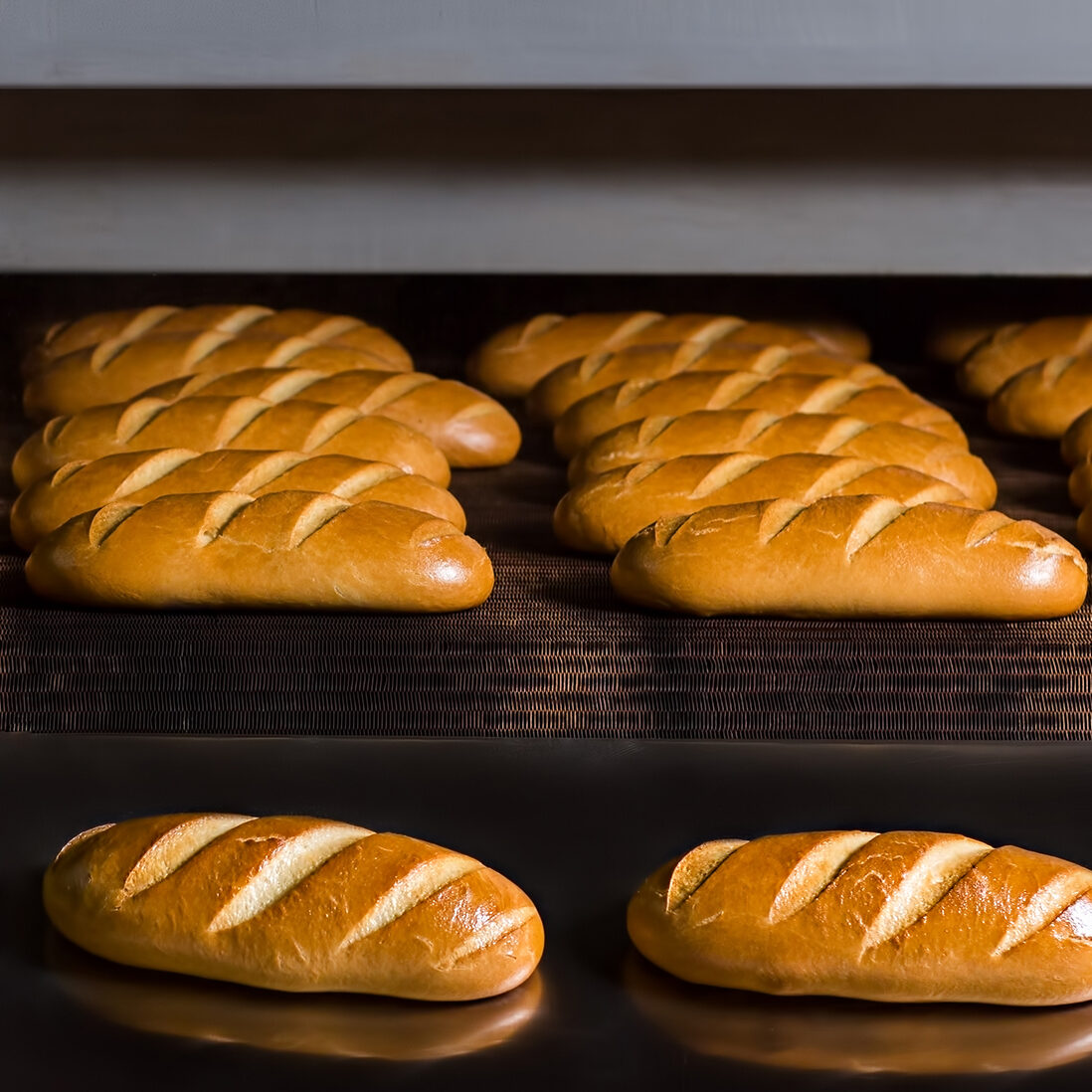

APPLICATION
Application of a shiny glaze on bakery products
A glaze enhances the palatability of a backed product, which gives a shine and reflects light. The application must be as even and complete as possible, while restricted to the product itself. It should not smear the plate or mesh supporting it. Methods for an accurate dosage and application pattern exist.


BASE
Core products
An extensive range of baked products can be glazed: croissants, bun, and bread.
RECIPE
Ingredients
Different ingredients and a combination of them can provide a light glaze:
- the egg is the traditional glaze medium, AKA egg wash
- milk and milk proteins,
- soy and vegetable proteins
- glucose syrup
A sugar fondant or chocolate covertures provide heavier glazes; in this case, the operation refers to enrobing rather than glazing.






RECIPE
Ingredients
Different ingredients and a combination of them can provide a light glaze:
- the egg is the traditional glaze medium, AKA egg wash
- milk and milk proteins,
- soy and vegetable proteins
- glucose syrup
A sugar fondant or chocolate covertures provide heavier glazes; in this case, the operation refers to enrobing rather than glazing.
PROCESS
How does it work?
The coating operation consists in applying the glaze on the product while avoiding losses in the immediate surrounding:
A light glaze dilutes a protein-rich powder or a concentrated slurry into a softer suspension; the preparation must be kept cold to prevent microbial growth.
For reference, sugar fondant and chocolate covertures are described as:
- Sugar fondant: the preparation involves the dispersion of refined sugar in a concentrated sugar solution; the practice must be kept at constant temperature and agitation to maintain its physical properties – whiteness, viscosity, and crunch – resulting from the balance between dissolved and finely crystallized sugar
- Chocolate: the solid chocolate must undergo a complex operation called tempering: melting, cooling, and partial re-melting; the preparation involves a complex system that ensures melting, agitation, circulation, and temperature control before use. The operation may be semi-automatic or fully automatic and continuous.
Losses are recovered or cleaned.
Step 1.
Liquid application by brush or spray.
Step 2.
Liquid application by brush or spray.
Step 3.
Stabilisation by baking.
PROCESS
Coating system
Different coating systems can be used:
- Traditional brush
- Curtain and recovery/recycling of excess in the case of the thick application of a viscous fluid
- Spraying for accurate application of a low-viscosity liquid
The difference between the systems lies in the engineering details designed to cope with constraints:
- cooling
- recycling
- hygiene and cleanability
PROCESS
Coating system
In a high-capacity industrial line, spraying proves the most appropriate application system. If well controlled, it ensures a precise application in quantity and surface.
PRODUCT EVALUATION
How do you measure your success?
Key quality features
If the first visual is, the evaluation triggers multiple questions.


Shine
After completion, the glaze must display a bright shine.
Stability
The glaze must be evenly applied and should cover the desired surface, the side of the product being the most difficult.
Stability
Further processing steps should not affect stability: cooling and freezing.
Key quality parameters
The process displays critical factors to control.


Ingredient composition
Type of glaze, water content.
Physical characteristics
Viscosity and surface tension.
Application precision
Dosage and application precision also result in reduced consumption and improved hygiene.
APPLICATION
Discover more applications

